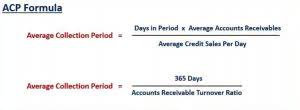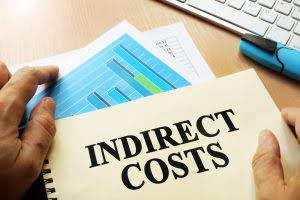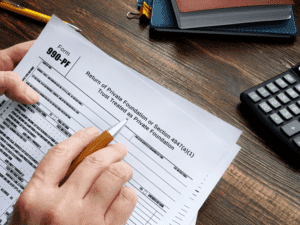
It provides enterprise-level functionality for inventory, order, freight, dock door scheduling, accounting, reporting, HR management and more. The higher the shipping expense recovery ratio, the better, as this means you’re subsidizing less of the customer’s shipping expenses. If your shipping expense recovery ratio is decreasing, you may need to review your pricing strategies and how you charge customers for shipping. However, you’ll want to find a sweet spot between a high shipping expense recovery ratio and positive customer satisfaction that results in ongoing orders.
Compliance and Reporting
- This method assumes the most recently purchased or produced inventory items are the first items to be sold.
- This guide sheds light on winery accounting principles so you can keep an eagle eye on financial health and maximize profits.
- This approach can be beneficial in times of rising costs, as it matches older, potentially cheaper costs against current revenues, thereby inflating profit margins.
- The ratio allows you to see how much you are subsidizing customer shipping costs, as this expense can get away from boutique wineries that don’t monitor it.
- We provide a full range of tax, accounting and business advisory services to our clients to help them achieve their personal or corporate objectives.
So, because of the crappy profits on distributor sales, the winery really needs to know how much its products cost. Look for features like real-time data collection, inventory management, and compliance tools to enhance efficiency and decision-making. By streamlining operations, improving resource management, and reducing waste, vineyard management software ultimately drives higher profitability. Better financial oversight also helps you identify cost-saving opportunities and reinvest in your business. It’s important to analyze the gross margin of each sales channel separately, rather than comparing them. For example, if you sell directly to consumers in your own tasting room, you’re likely to experience higher gross margins than when working with wholesale or retail vendors.
- By keeping this ratio in check, wineries can ensure that their operational costs do not erode their profits.
- For small wineries, their bookkeeper or tax preparer will often help them move their bookkeeping from a pure cash basis to a tax basis.
- In some cases, certain expenditures may or may not be classified as winemaking costs; it really depends on the situation.
- The operations of a vineyard or winery present unique issues for the accountant that require alterations to its chart of accounts, costing system, and many of its procedures.
Which accounting method should I use for my winery?
Throughout the year, as you pay for grapes, receive invoices, and process payroll, allow assets = liabilities + equity those expenses to accumulate within these temporary accounts. First, create temporary accounts within the “other expenses” section of your profit and loss (P&L) statement. The chart below lists expenditures that are commonly considered winemaking costs and some that aren’t.

Materials
- GAAP and tax-basis financial recordkeeping, so it’s useful to discuss this with your CPA.
- Knowing which category or categories you fall into will help ensure that you track the correct numbers.
- If that winery has 10,000 total square feet and 6,000 is used for production, 60% of the facilities rent and facilities insurance costs could be allocated to wine production based on square footage.
- And, there can be wine shrinkage, where the wine evaporates while it’s aging in the oak barrels.
- In this case, the ratio is 0.83, which means the winery did not turn over all of its inventory in the year and is carrying some into the next year.
While labor-intensive, it offers unparalleled accuracy, making it ideal for limited-edition or vintage wines where each item’s cost and potential selling price can vary significantly. Another important aspect of cost accounting in vineyard operations is the use of standard costing. This involves setting benchmark costs for various activities and comparing actual costs against these standards. Variances between the two can highlight areas where the vineyard is overspending or where efficiencies can be improved. For instance, if the actual cost Law Firm Accounts Receivable Management of harvesting grapes significantly exceeds the standard cost, it may indicate issues with labor productivity or equipment efficiency that need to be addressed. Cash flow from operations is another critical metric, reflecting the actual cash generated by the winery’s core business activities.

Gross Margin Percentage Example
Proper implementation ensures that your investment in software delivers the maximum return. If you want to spend your time doing what you do best, let the experts at Protea give you the luxury of not having to think about your books. Customer Reviews, including Product Star Ratings help customers to learn more about the product and decide whether it is the right product for them. If you’re considering hiring a bookkeeper to prepare your financial statements, be sure wine accounting to know what to consider when selecting one.

Key Financial Metrics for Vineyards and Wineries

Protea Financial is here to help you understand the basics of wine accounting so that you can make informed decisions about your business. Start by assessing your vineyard’s needs, comparing key features and pricing, and requesting demos to find the best fit for your operations. One standout feature is real-time microclimate data, which empowers vineyard managers to make timely decisions on irrigation, pruning, and other critical tasks. For example, when weather conditions change unexpectedly, the software provides actionable insights to help you adapt your strategies on the fly.

- By carefully managing these loans and ensuring they are repaid during peak sales times, wineries can maintain a steady cash flow without incurring excessive debt.
- In order for a winery to use LIFO for tax purposes, it is also required to use it for financial reporting purposes.
- It’s important to analyze the gross margin of each sales channel separately, rather than comparing them.
- Records must be kept for loss, leakage, and voluntary destruction quantities, because no tax will be charged on those amounts.
- Year-over-year (YoY) growth is an important financial ratio when measuring business growth and creating informed strategies for future success.
Managing them strategically gives you a crystal clear picture of your winery’s financial health. Note that packaging materials should be applied to the cost of finished goods inventory as used and may be specifically assigned to wines or allocated to all wines bottled in the period. In order for a winery to use LIFO for tax purposes, it is also required to use it for financial reporting purposes. Typically, wineries utilizing LIFO initially utilize SPID or FIFO for internal, managerial accounting purposes and record a LIFO reserve to adjust to LIFO for financial reporting and tax purposes. For this reason, most wineries track and report their wine inventory costs in separate inventory pools such as bulk wine, packaging materials, and finished cased wine.